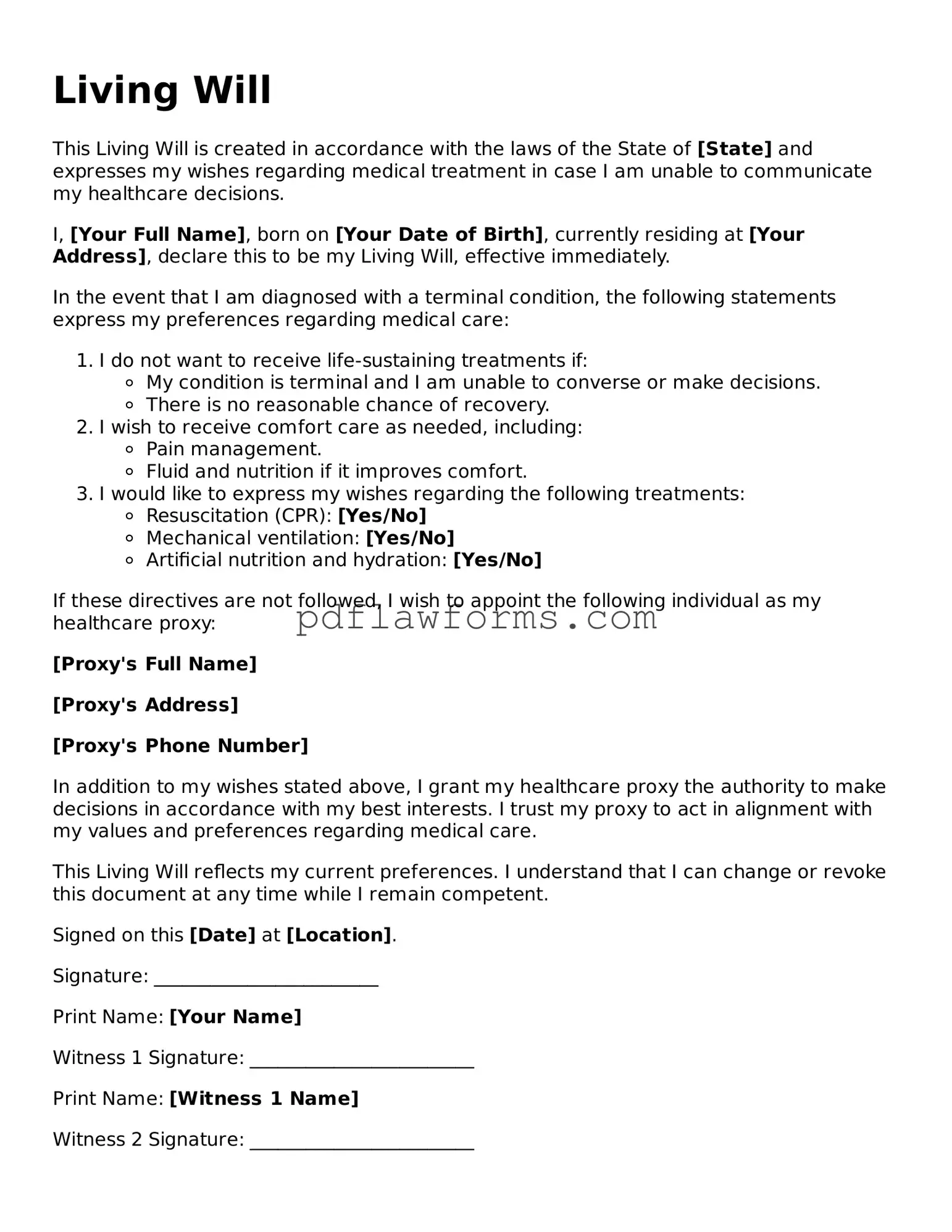Filling out a Living Will is an important step in ensuring that your healthcare wishes are respected, especially in times of crisis. However, many individuals make common mistakes during this process that can lead to confusion or even disputes later on. Understanding these pitfalls can help you create a more effective document.
One frequent mistake is failing to be specific about your wishes. While it may seem straightforward to state that you do not want certain medical treatments, vague language can lead to misinterpretation. Instead of simply stating your preferences, consider detailing specific scenarios and what actions you would like taken or avoided in each case.
Another common error involves not discussing your Living Will with family members or healthcare proxies. This document is not just a legal form; it represents your values and desires regarding end-of-life care. If your loved ones are unaware of your wishes, they may struggle to make decisions on your behalf. Open conversations can clarify your intentions and foster understanding.
Many people also neglect to update their Living Will as circumstances change. Life events such as marriage, divorce, or the birth of a child can influence your healthcare decisions. Regularly reviewing and revising your Living Will ensures that it accurately reflects your current values and relationships.
Some individuals mistakenly believe that a Living Will is only necessary for the elderly or those with serious health conditions. In reality, anyone over the age of 18 should consider having one. Accidents and unexpected illnesses can happen to anyone, making it essential to have your wishes documented early on.
Another mistake is failing to sign the document correctly. Each state has specific requirements for a Living Will to be legally valid, including the need for witnesses or notarization. Ignoring these requirements can render your document ineffective, leaving your healthcare decisions unprotected.
People often overlook the importance of choosing the right healthcare proxy. This individual will be responsible for making decisions on your behalf if you are unable to do so. Selecting someone who understands your values and can advocate for your wishes is crucial. Avoid appointing someone simply because they are a close relative; consider their ability to handle such responsibilities.
Additionally, some individuals do not consider the potential for conflict when drafting their Living Will. It’s wise to anticipate that family members may disagree about your wishes. Addressing these potential conflicts in advance, perhaps by discussing your decisions with all involved parties, can help mitigate disputes later.
Finally, many people fail to store their Living Will in an accessible location. After completing this important document, ensure that your healthcare proxy and family members know where to find it. Keeping copies in multiple locations, such as with your doctor and at home, can prevent confusion when decisions need to be made quickly.
By avoiding these common mistakes, you can create a Living Will that truly reflects your healthcare wishes and provides peace of mind for you and your loved ones.
